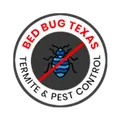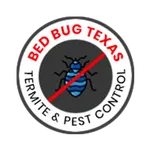Bed Bug Heat Treatment
Setup & Instructions Guide
Setting up a bed bug heat treatment system effectively and using it correctly is crucial for eradicating these pests from your living spaces. Our setup and instruction guide, enhanced for readability and efficiency, ensures that you implement our bed bug heat treatment system optimally.
Follow each step diligently for successful bed bug elimination. Please ensure you have completed all preliminary steps outlined in our Customer Preparation Sheet before proceeding.
1. Single Room Heater and Fan Configuration
When treating a single room, various setup configurations can effectively increase the temperature to the desired level. For compact bedrooms, simply positioning air-moving fans in any free space near the bed should suffice, with furniture slightly moved away from the walls. For larger bedrooms or living areas, aim to establish a circular airflow, similar to a convection oven, to distribute heat evenly throughout the room.
Tip: Directing a fan towards the closet door can help split the airflow efficiently between the closet and the main room. Ensure there is ample space around the heater to prevent obstruction and avoid placing electronics in direct heat paths. Adjustments can be made during the treatment if necessary.
2. Multi-Room or Whole House Setup
For treating multiple rooms or an entire house, place the heating units and some air movers in the largest central area to mimic a racetrack airflow pattern. This setup facilitates efficient heat distribution. Position additional fans at bedroom doorways and hall entries to push heated air into each room, utilizing walls to direct airflow effectively. Adjust setups as needed based on the specific layout and requirements of your home.
3a. Heater Setup for Small Spaces (Elite 4 Model)
Connect the black power cord to a nearby outlet for fan operation.
Attach four blue heater element cords to the unit’s side ports, ensuring each is plugged into separate 15 or 20-amp circuits across different rooms to avoid overloading. It is not mandatory to use all elements simultaneously.
3b. Heater Setup for Larger Areas (VersaPro Model)
- 110V Operation: Follow the same steps as for the Elite 4 model for up to 400 square feet of coverage.
- 220V Operation: For additional heating capacity, utilize a “Y” adapter to connect two large black cords to a 40 amp stove outlet, or connect a single cord for half the power from a dryer or hotel A/C outlet.
4. Setting Up Air Moving Fans
Plug in all fans into available outlets without worrying about separate circuits, as their low amperage draw won’t trip breakers.
5. Starting the Equipment
Ensure everything is plugged in and operational. To activate the air movers, turn on the heater by pressing the green button for the fan, followed by the red button for the heating elements, preset to 135 °F.
6. Monitoring the Process
Regularly check the system to prevent breaker trips. If a breaker does trip, it is likely due to two heating elements sharing a circuit. Relocate as necessary. Use the provided laser thermometer to monitor temperatures in various locations within the room, aiming for uniform heat distribution above 120 °F over 15–20 hours.
7. Ensuring Comprehensive Heat Coverage
To guarantee thorough treatment, consider agitating clothes, separating stacked items, and rearranging furniture to expose all possible hiding spots to the heat. Proceed with caution, as temperatures will be extremely high.
8. Shutting Down
Once the treatment duration is complete and the target temperature is maintained, turn off the equipment, starting with the heating elements. Gradually cool down the treated area by natural ventilation to prevent damage to sensitive items.
9. Post-Treatment Care
After cooling down, clean the treated area and launder all fabric items at high temperatures. Applying a residual pesticide for bed bugs is recommended, but not obligatory.

